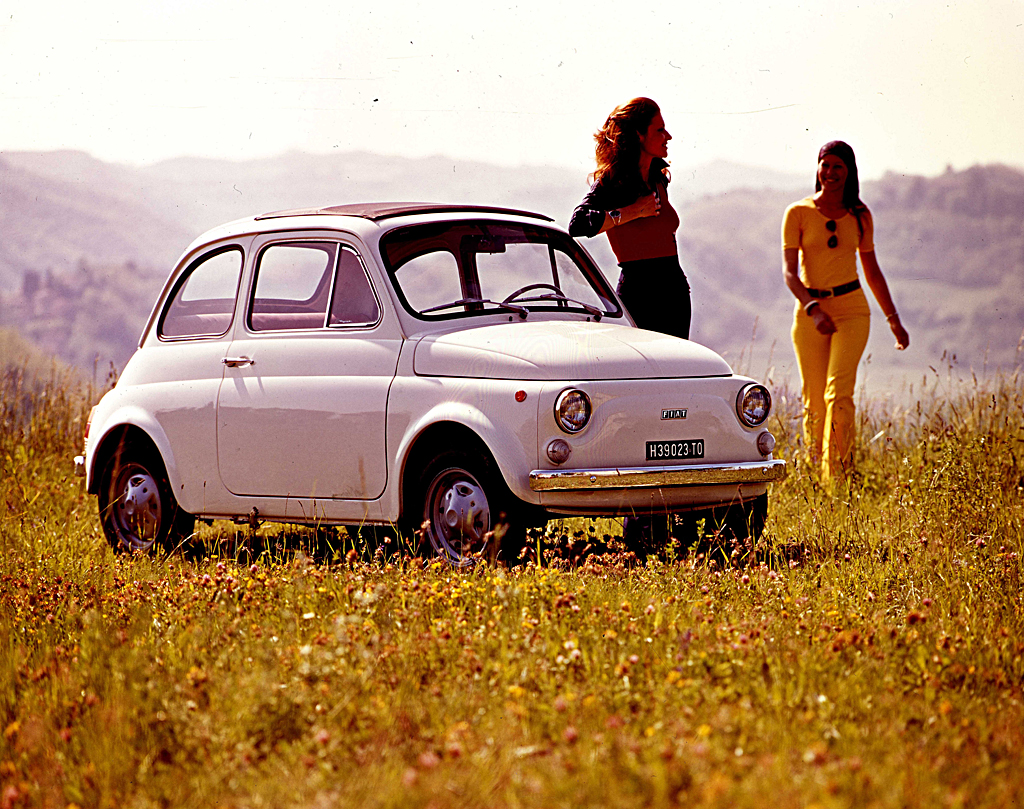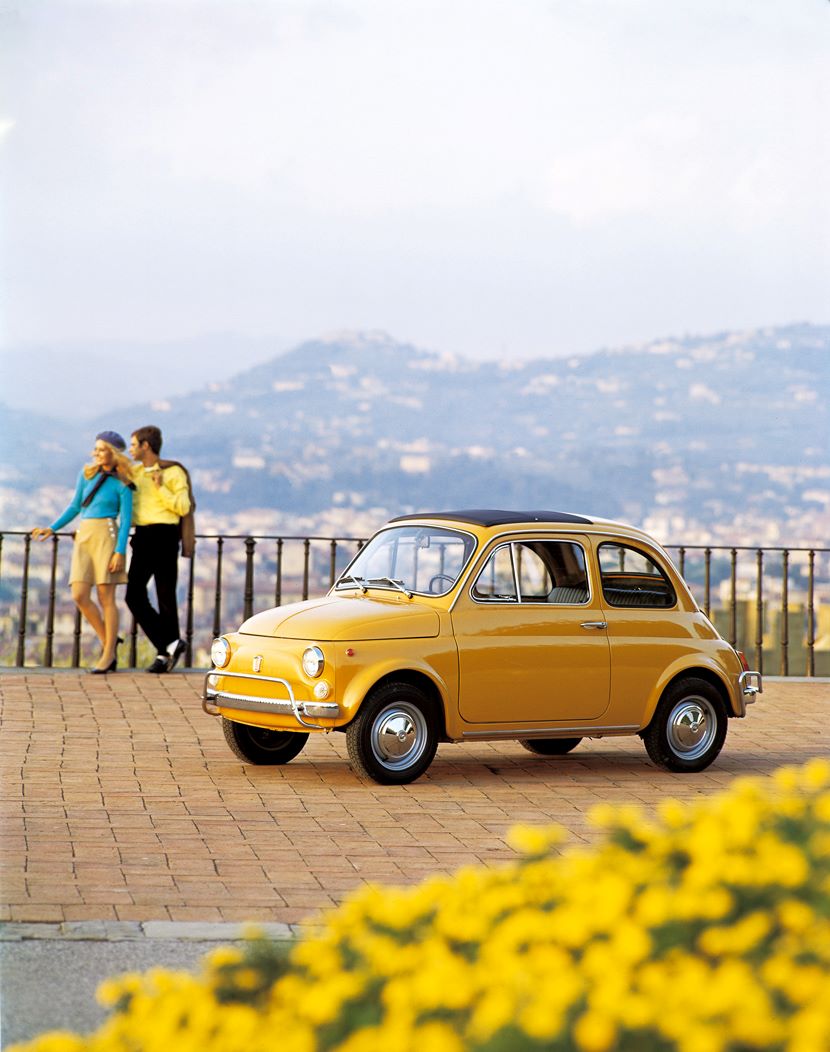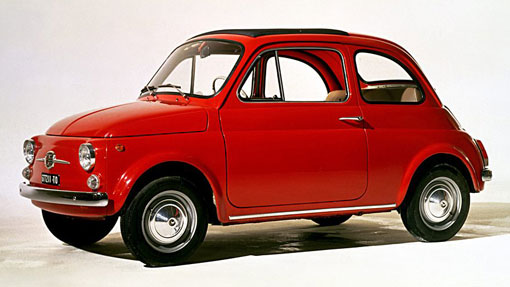BUYER’S GUIDE
Fiat 500 Review
Still the best way to bash about the narrow streets of an Italian town, the classic Fiat 500 is a charismatic classic over here as well
Engine
499cc two-cylinder, petrol
Power
18PS (24kW) @ 4,600rpm
Torque
30Nm (22lb ft) @ 3,000rpm
Kerb weight
520kg
0-62mph
N/A
What Is It?
Needs must and the rush to get Europe motoring again after the war inspired some incredibly innovative – and utterly distinctive – engineering solutions. Germany had the Beetle, France the Renault 4CV and Citroën 2CV while Italy, of course, its ‘Nuova’ Fiat 500. These were joined in due course by the game-changing British Mini, these cars all iconic in their own way and testament to their respective manufacturers thinking outside of the box to deliver cars that were as cheap to buy and run as they were to build. All have their own characters as well, the Fiat 500 symbolising that idealised image of Italy as a romantic destination populated by effortlessly cool and beautiful people dashing about from one espresso bar to the next. Where previously they’d have done it on Vespas and Lambrettas the Fiat 500 was designed to achieve the same ends with four wheels, a roof over your head and a semblance of refinement. All things relative. And this it achieved, soundtracked by its spluttering air-cooled engine and wrapped in that unmistakably dinky styling.
Corrosive Areas
Sunroof surrounds
Sills and floorpan
Window frames
Checklist
- Fiat 500 evolution can basically be split into the original Nuova 500 (sometimes called the N) that launched in 1957 and the upgraded D that came in 1960, both obvious by their rear-hinged ‘suicide’ doors
- The 500 F launched in 1965 provided the basis for the remaining production run, adopting conventional front-hinged doors and various other upgrades; the L (for Lusso) version of this added more luxuries and can be distinguished by its front ‘bull bar’ bumper and rear over-riders while the R that followed in 1971 had the bigger engine from the 126
- On the inside the 500 L differs from the F sold alongside it by its trimmed dashboard and slot-like speedo in place of the painted metal and circular dial of the more basic model
- The 500 was built to be cheap and rust consumes many to beyond the point of economical repair; dry climate ones from southern Italy can still be found but they’ll have lived several hard lives by now and even these can’t escape corrosion
- The single-skin construction means rust will at least be obvious but check everywhere, especially in the front luggage compartment around the fuel tank and battery, along the sills, sunroof, around the windows and the rear trailing arm mounts
- The engines are simple and tough, but rebuilds can be expensive if required so look out for smoke on start-up and any signs of overheating, the latter often caused by inoperative cooling flaps
- Original 500 gearboxes aren’t synchronised so can suffer from hamfisted shifting; a vague selector could be cured by new linkage bushings but jumping out of first signals a rebuild
- Check the car sits level and the state of the transverse front leaf spring, which along with the kingpins needs regular lubrication; rear suspension mounts and arms can corrode with catastrophic results
- Engine swaps from the later 126 are not uncommon and mean a bit more power and a proper synchromesh gearbox
How Does It Drive?
While the skins of rice puddings have little to fear from the air-cooled twin, and you can forget quoting zero to 60 times on the basis even that figure will likely be a distant dream, there’s no shortage of fun to be had at the wheel of a 500. Eager and torquey, the engine is tuned to work perfectly in the narrow, twisty streets of an Italian town and can get up to urban speeds reasonably quickly, the steering light and direct, the ride bouncy and the gearing short. You’ll need to be on your game with the double-declutching and the short-travel clutch if your chosen 500 has the original non-synchro ‘box but this is all part of the fun and the tiny footprint is as useful now as it ever was. A Mini or Beetle will cope better if your driving takes you beyond city limits but, in its urban comfort zone, the 500 is every bit as fun and charismatic as the image suggests.
What’s Good?

The 500 is one of those cars that proves there’s more to life than horsepower and speed, the charm of its looks, the incredible space efficiency of its design and the raucous way it deploys its modest performance all sure to put a smile on your face. At a squeeze you can even fit four people in it, the sociable vibe, the joy of rolling back the fabric roof to soak up the sun and sense of innocent fun all equally addictive. Bodywork aside it’s also a very simple car, with the bare minimum of electrics or other things to go wrong and have it sidelined on the driveway when you should be out having fun.
What’s Bad?
Best will in the world the 500’s very specific skillset limits it to slower road and shorter journeys, and taking it onto a motorway or fast-moving A-road is going to be frustrating and, in all likelihood, pretty scary as well. To the latter it goes without saying you’re not going to want to be involved in a crash with a modern vehicle either. The non-synchro gearbox may also be a bit ‘vintage’ for modern drivers. But a later engine swap can solve that and for for popping down to the village, nipping to the nearby beach or just puttering around town it’s still fun. Meanwhile the cheapness of its construction is reflected in the propensity to rust, with even cars who’ve lived their lives in dryer climates vulnerable and the cost of bringing one back from serious corrosion likely beyond what seems economically viable.
Which Model To Choose?

Early, pre-1965 N and D cars with the reverse-hinged doors are going to be pretty thin on the ground now so your main decision is going to be between the more conventional F and the slightly more luxurious Lusso versions from the mid-60s onwards. These still have all the charm you’d want out of a 500, the F’s metal dash and round speedo considered more attractive than the trimmed one of the L. Though, it’s worth pointing out, the latter does get such luxuries as a fuel gauge, rather than a simple warning light to warn you when you’re about to run out. Later R versions get the later 126 engine and, all things relative, a fraction more performance but many older cars have had these retrofitted at some point over the years. Short version? It’s probably best not to get too hung up on a particular model, and just pick the least rusty one you can find, or one with documented evidence of a proper restoration.
Specifications
Engine
499cc two-cylinder, petrol
Power
18PS (24kW) @ 4,600rpm
Torque
30Nm (22lb ft) @ 3,000rpm
Transmission
Four-speed manual, rear-wheel drive
Kerb weight
520kg
0-62mph
N/A
Top speed
60mph
Production dates
1957-1975 (total production)
